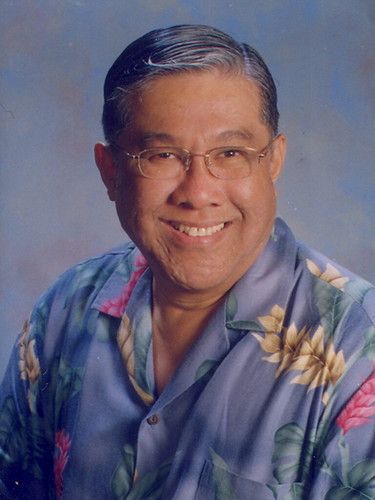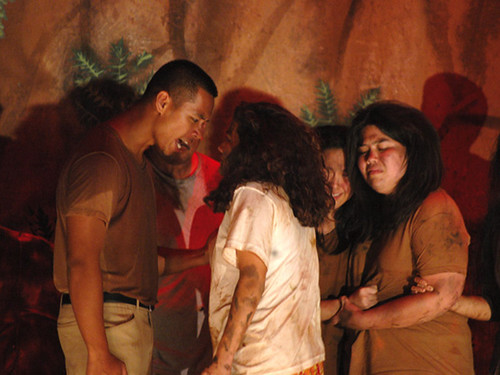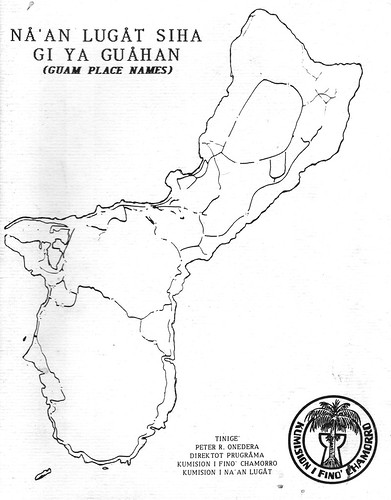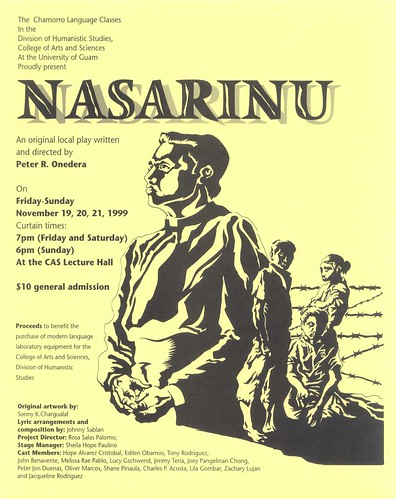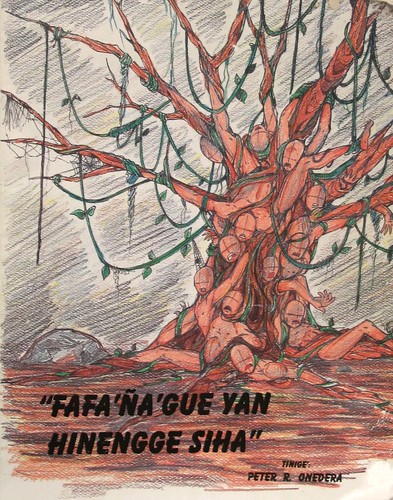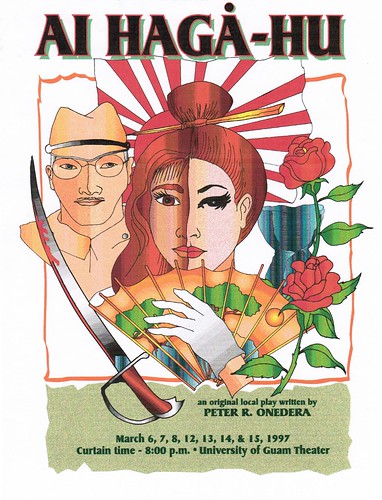Theater and performing arts
Peter R. Onedera (1953 – ) is a playwright, author and poet, a master storyteller and a Chamorro language educator. Onedera was raised in the village of Sinajana. He received his Master of Arts degree from the University of Guam, writing his thesis entirely in Chamorro.
From the age of seven, Onedera nurtured a life-long love for the performing arts and theater. Over the years he has written several dozen plays, a number of which he also directed for performance on local stage. Onedera was driven to write plays because of a dearth of Chamorro literature. Because Chamorro is an oral language, he believed there were few avenues to effectively perpetuate the language for a broad audience. He saw theater arts as a strategy of preservation, a means to tell the stories of the Chamorro people, and a way to bridge a gap with younger generations about their history and language.
The subject matter of much of Onedera’s work ranges from traditional legends to social issues, family values and cultural history of Guam. Wanting to focus his writing on lived experiences and the life of the Chamorro people, Onedera’s works often intertwine stories heard from personal interviews with island man’amko (elders). One of his most significant plays is “Ai Haga-hu!,” a play about young women on Guam who were forced to serve the Japanese as comfort women during World War II. The play was performed at the University of Guam Fine Arts Theater in spring 1997.
In fall 1999, UOG hosted another of Onedera’s plays entitled, “Nasarinu,” about the plight of Chamorro patients who were imprisoned in the Tumon leper colony during the American military administration in the early 1900s. The following year, Onedera penned another play, “Chinahlao Dinimalas.” Onedera, highly committed to education, donated the proceeds from performances of “Nasarinu” and “Chinahlao Dinimalas” to buy equipment for the UOG Division of Humanistic Studies in the College of Arts and Sciences analog language lab.
Onedera is a long time advocate of Chamorro language and culture. In the early 1990s, he served as the director of the Chamorro Language Commission, which was established to formulate Chamorro language policies for the island of Guam, including the development of a standardized orthography and dictionary. Onedera is also an active member of a number of community-based organizations, several of which focus on the perpetuation of the Chamorro language, including a Chamorro language storytelling group. With interests that also lie in Chamorro culture and history, he is recognized as a contemporary expert on the Chamorro language and as a translator. Additionally, Onedera is a Guampedia advisor and co-author.
Besides being a well-known local playwright, for several years, Onedera was a professor of Chamorro language at the University of Guam. Working around his teaching responsibilities, Onedera continued his involvement in other community activities to promote Chamorro language and learning. One of his major accomplishments was as founder and organizer of the Annual CHamoru Language Competition held at the university. The event brings public and private elementary, middle and high school students from throughout Guam and the Commonwealth of the Northern Mariana Islands together for a day of performances, competition and fun while promoting the native language.
Another important project that Onedera helped initiate was the revival of the humorous Chamorro language comic strip, “Juan Malimanga.” The original strip was the brainchild of Chamorro storyteller, educator and Chamorro language advocate Clotilde Castro Gould. In 2009, Onedera, along with UOG art professor Ric Castro, guided art students and Chamorro Studies students to create the jokes, storylines and artwork for the strip for publication in the Pacific Daily News. Written in Chamorro, the comic strip tells of the exploits of the jokester Juan Malimanga who epitomizes Chamorro island humor.
To bring Chamorro language to a higher level of academic recognition and scholarship, Onedera was instrumental in establishing the Chamorro Language Documents Reference Room at the University of Guam Richard F. Taitano Micronesian Area Research Center in 2011. The room is meant to be a repository for materials written in the Chamorro language, including letters, diaries, books, poetry, song lyrics, programs and prayer books. He also helped develop the Chamorro Studies minor program (Prugraman Minot Inestudion), the first of its kind, within UOG’s College of Liberal Arts and Social Sciences, also in spring 2011. The minor program emphasizes not only Chamorro language, but includes courses covering other aspects of cultural heritage and traditions for university students.
Producing works in Chamorro remains Onedera’s passion. One of his earlier books is Nå’an Lugåt Siha gi ya Guåhan: Guam Place Names, which was published in 1989 by the Chamorro Language Commission. In this book, Onedera investigated the history of village names throughout the island through interviews with island elders, but also through study of the Chamorro orthography. In 1994, he wrote Fafa Na ‘Gue Yan Hinengge Siha (Ghosts and Superstitious Beliefs) in both English and Chamorro as a collection of Chamorro superstitions and legends. A year later, Visions of a Chamoru, a collection of Onedera’s poems, was published. In 2006, he published a novella, Cheffla gi i Manglo, or Whistle in the Wind, and in 2009, he published Gi I Tilu Gradu (In the Third Grade), a humorous autobiography about life through the lens of an elementary-aged student in the village of Sinajana.
For further reading
Guam Council on the Arts and Humanities Agency. “Artists – Guam CAHA.”
I Manfayi: Who’s Who in Chamorro History. VoI. 3. The Hale’-ta Series. Hagåtña: Department of Chamorro Affairs, Division of Research, Publication, and Training, 2002.

